If you ask people across the world about the one novel/story that scared them to death, it is likely that the name ‘Dracula’ will be in the top of the list. Remembering reading the novel as a child brings chills to the spine even today. Although times have changed and vampire stories are dime a dozen, you’ll agree that the bone chilling fear and suspense in Count Dracula is unmatched. Perhaps that’s why, even today, when we hear the term vampire, we find it synonymous with Dracula.. Interestingly very few know how Whitby played a huge part in shaping the novel.
Dracula instilled a sense of fear and helplessness in a generation of readers. It was more than just a gothic novel. It became a part of our lives so much so that we dreaded darkness. We feared somewhere in the pitch dark surroundings a vampire is waiting to bite us and suck our blood. Such was the impact of that novel in our lives…
Visiting Whitby in Search of Dracula Connection
So, when we were tired of just sitting at home over the Christmas holidays, we decided to travel to Whitby. Luckily, we found an accommodation at the last minute and packed our bags in earnest. We started off quite late in the morning (by 9 AM), which was unlike us. Anyway, we the excitement of the trip got us in great spirits.
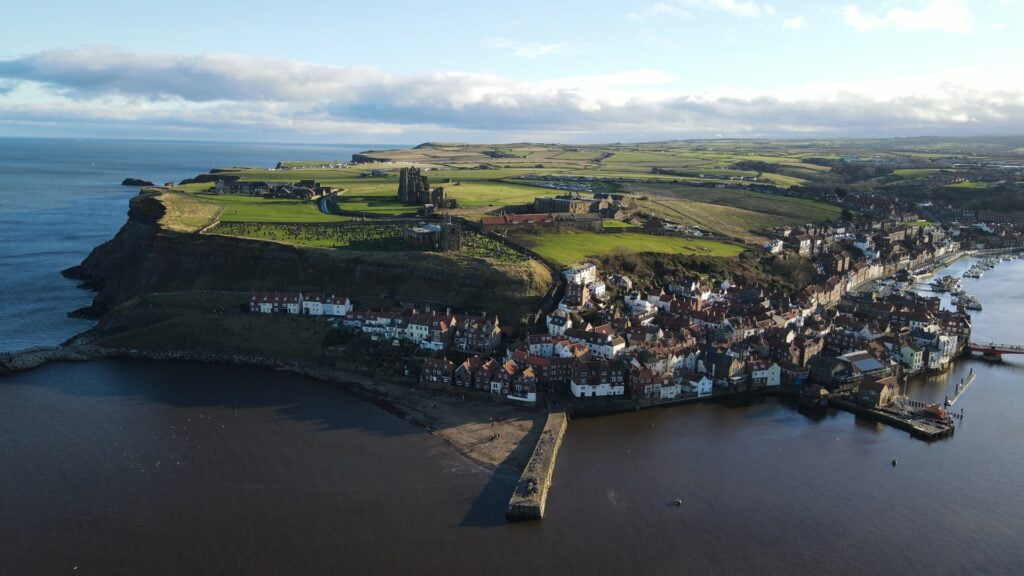
Of course, we did a quick research of the place and so we knew a bit about Whitby. It is a beautiful seaside resort along the Yorkshire coast. We’ve been to Scarborough earlier, but not Whitby. This was a busy port and harbour town in the early days, and during the Victorian times, gained popularity as a seaside resort.
It is amazing that such a visit by one holiday maker led to the birth of one of the most fearsome novels of the time – Bram Stoker’s Count Dracula. (More of that to follow…)
Other Sights On the Way to Whitby
Whitby is around 150 miles from Liverpool. On our way we passed several cities and towns. We took a pit stop at Pickering – an ancient market town popular as the Gateway to North York Moors National Park. We walked around a bit and explored the town. There is cute railway station in the town centre. The North Yorkshire Moors Railway runs from here from April to October. When we peeked in, the station was more or less deserted, except for some Christmas decorations.
We bought some snacks from a local store – since this was an unplanned trip, we didn’t carry much provision with us. Other than some easy to cook items for dinner and provisions for our morning coffee, we had nothing much with us. So this little break was more than welcome.
On We Go, Via Hogsmeade Station
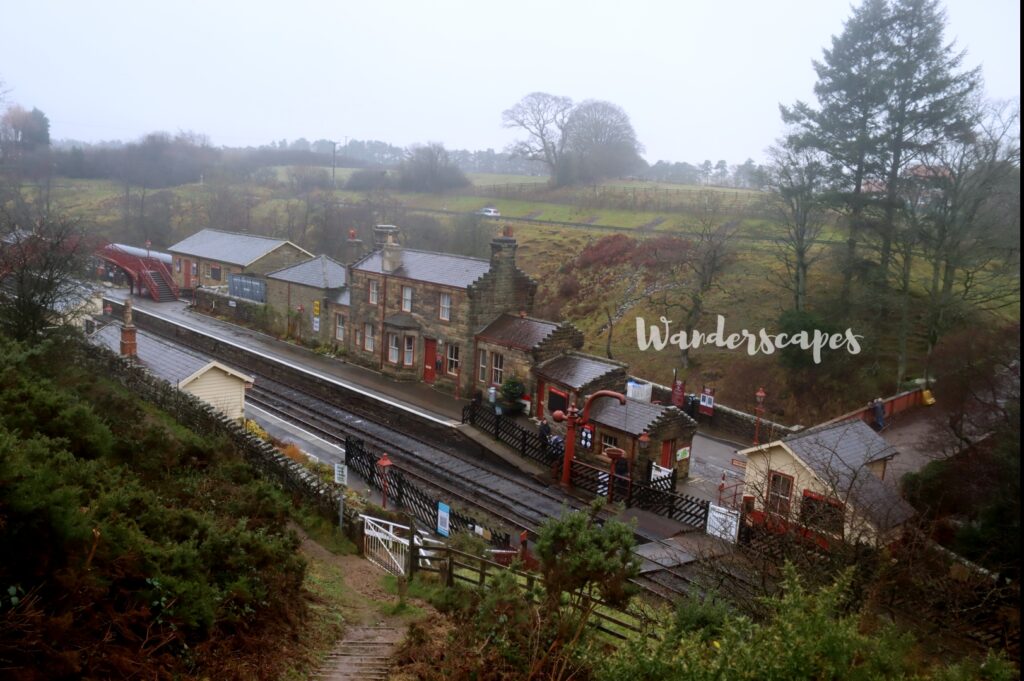
Harry Potter books and movies are quite popular even today. One of us being a Potter head, it is not surprising that we took a small detour to see the Goathland station. Its claim to fame is that it featured as Hogsmeade station in the Harry Potter movie. In fact, the first day of the movie was shot here at this station – albeit they shot the closing scenes of the first movie on that day.
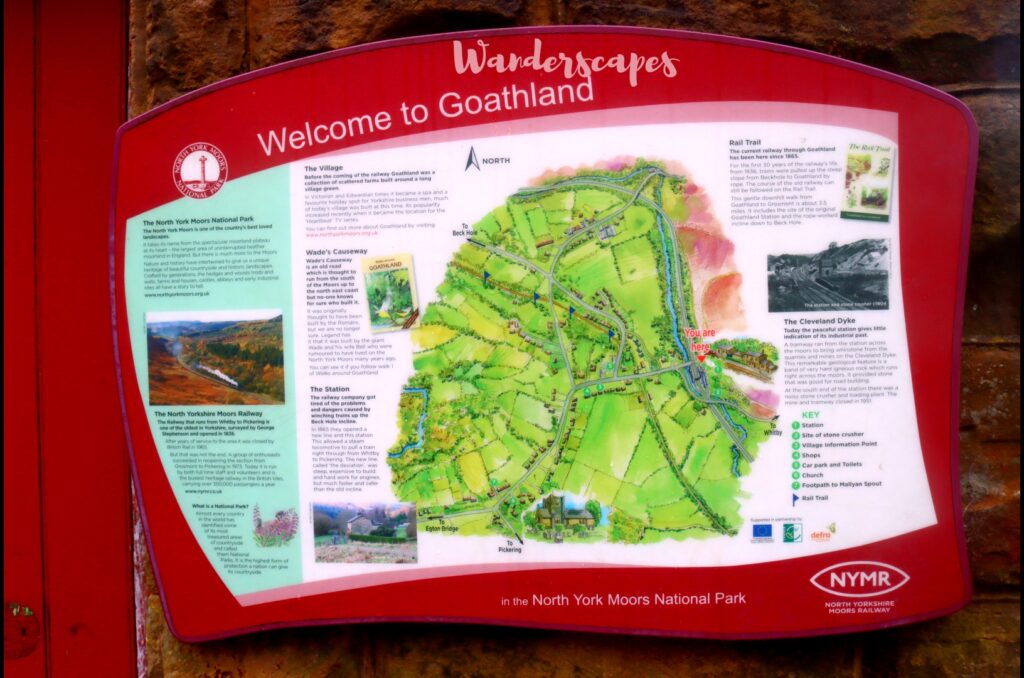
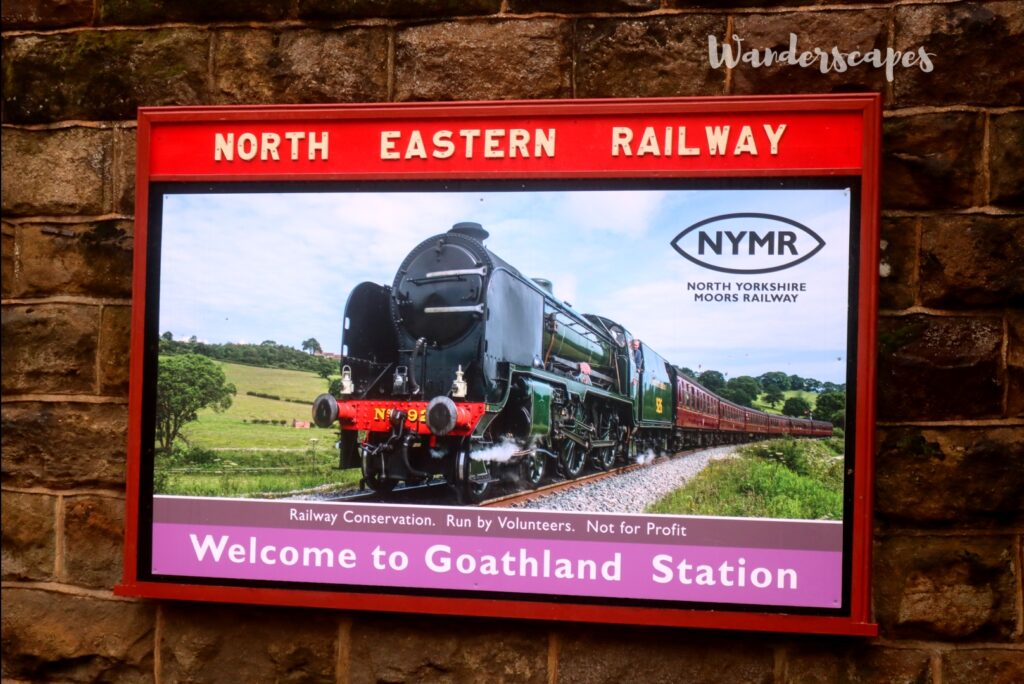
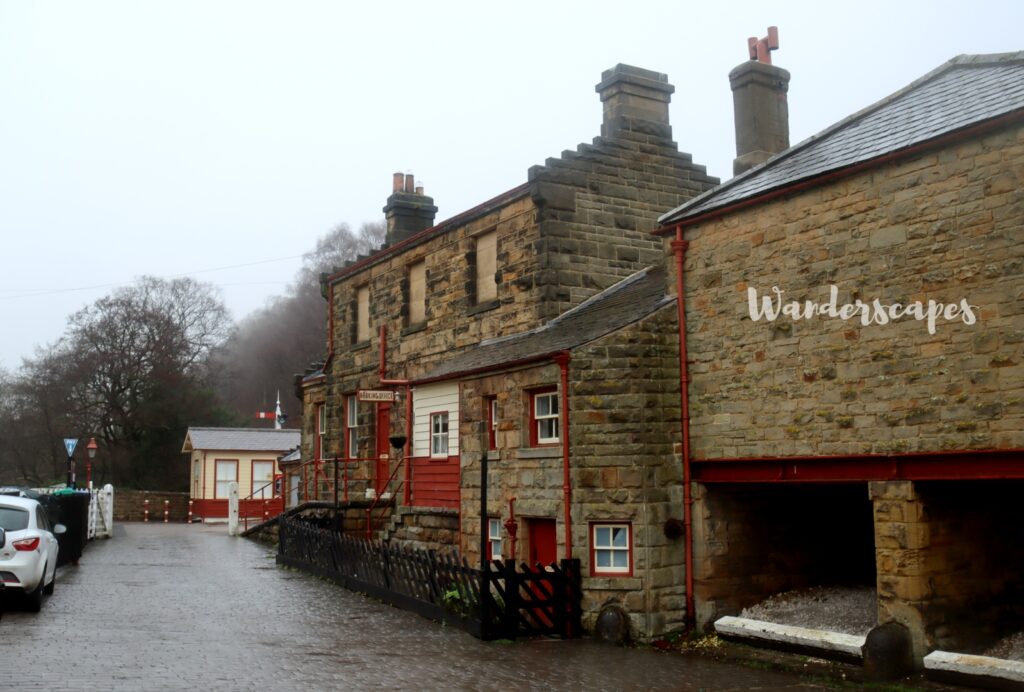
It was exciting to be there on the platform. We wouldn’t be surprising to bump into Hagrid there. It felt so real and exciting to be there. As if we became a part of the movie. We walked to the other side via an overbridge that was almost 200 years old.
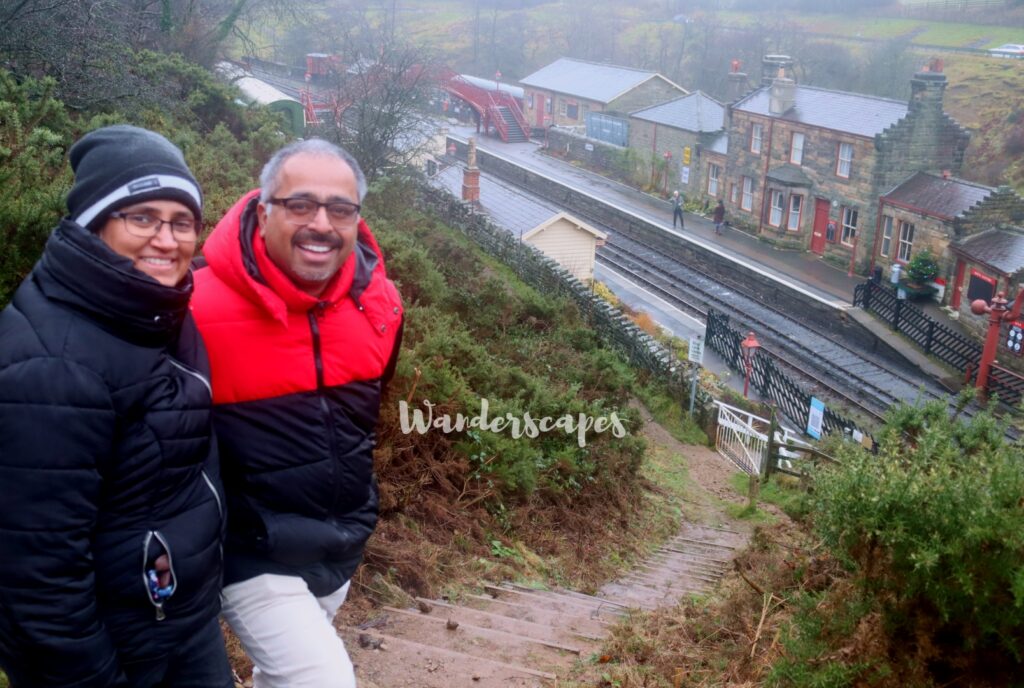
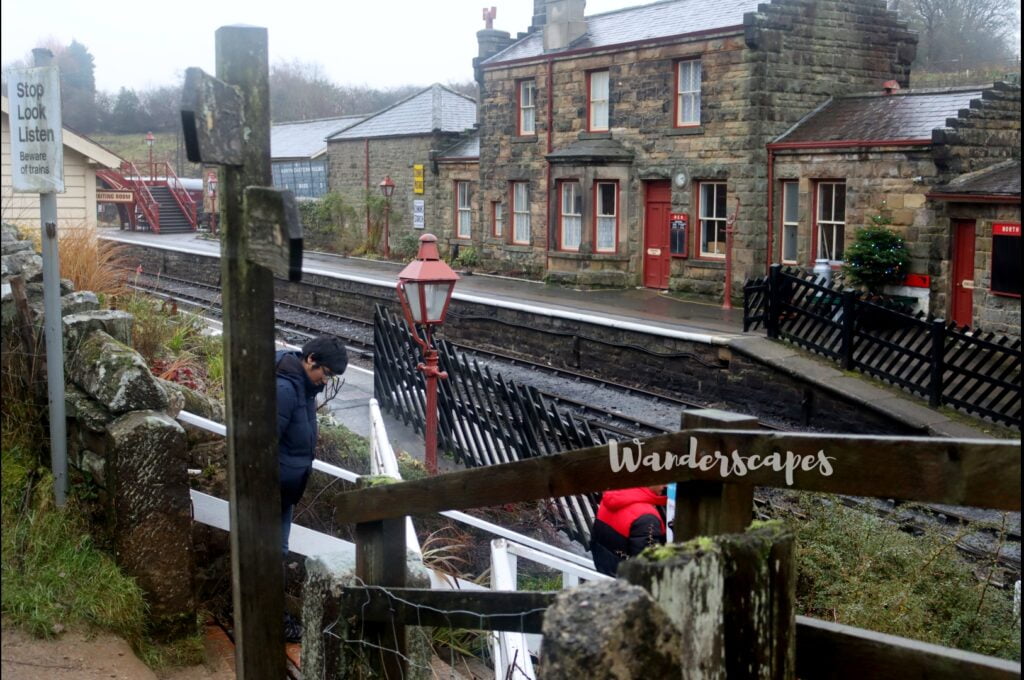
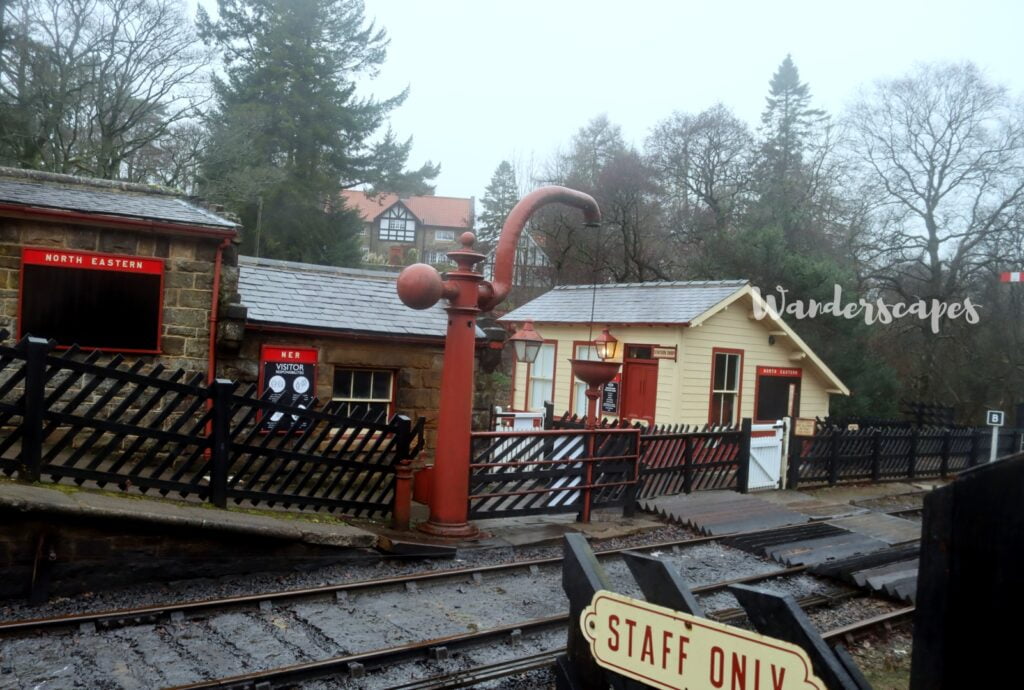
A small flight of stairs by the hillside on the far side of the station led us to the top. The view of the station from there is truly magical. It really felt like Hogsmeade.
Arriving at Whitby
The weather was showing its true English colours – sunny when we started, rainy after a while and now it was foggy. Visibility was low. But that didn’t deter our spirits and we drove through the foggy roads of the North York Moors National Park to arrive at our destination. By the time we located our guest house and parked our car, it was dark.
We enjoyed a cup of coffee and rested for sometime. Then we explored the town (More about it in the next blog). We got back by 9 PM, cooked and ate our dinner and went to be by 10PM or so.
A Wet Morning
We woke up to a wet morning. It wasn’t surprising though – the weather forecast was for rain until noon. So we started the day leisurely – had a late breakfast and headed to the town as soon as the rain stopped.
We reached the quayside in a few minutes and it was nice to see it buzzing with activity. Several fishing boats moored at the port, a couple of boats taking tourists onboard for a tour, people going about with their activities. After the rain, the town was gleaming in the sun. We spent a few minutes watching everything and headed to the east cliff.
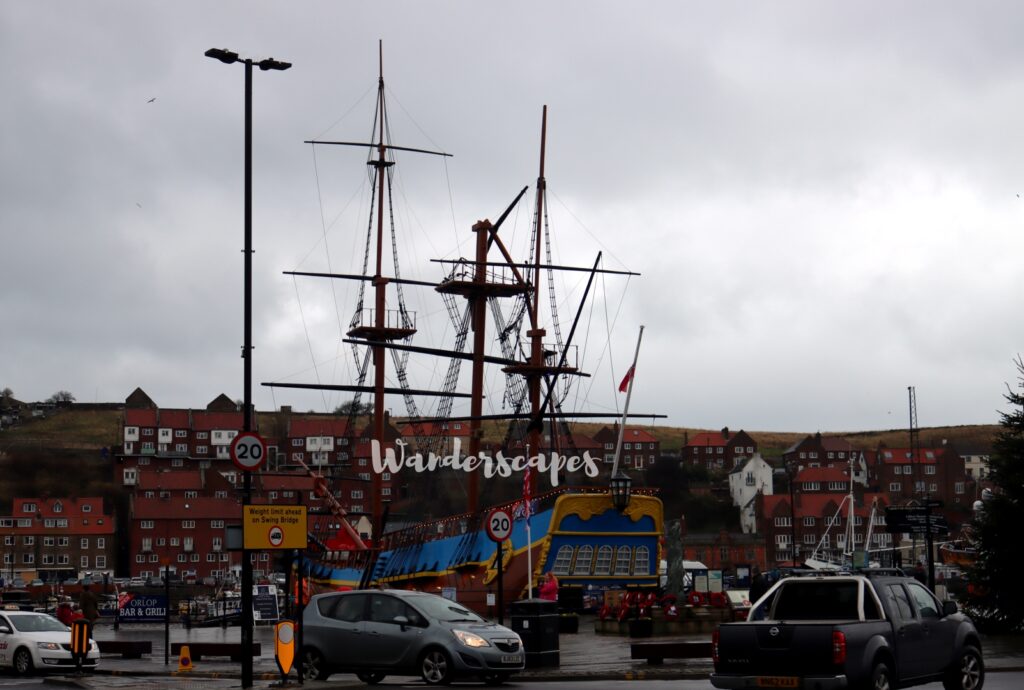
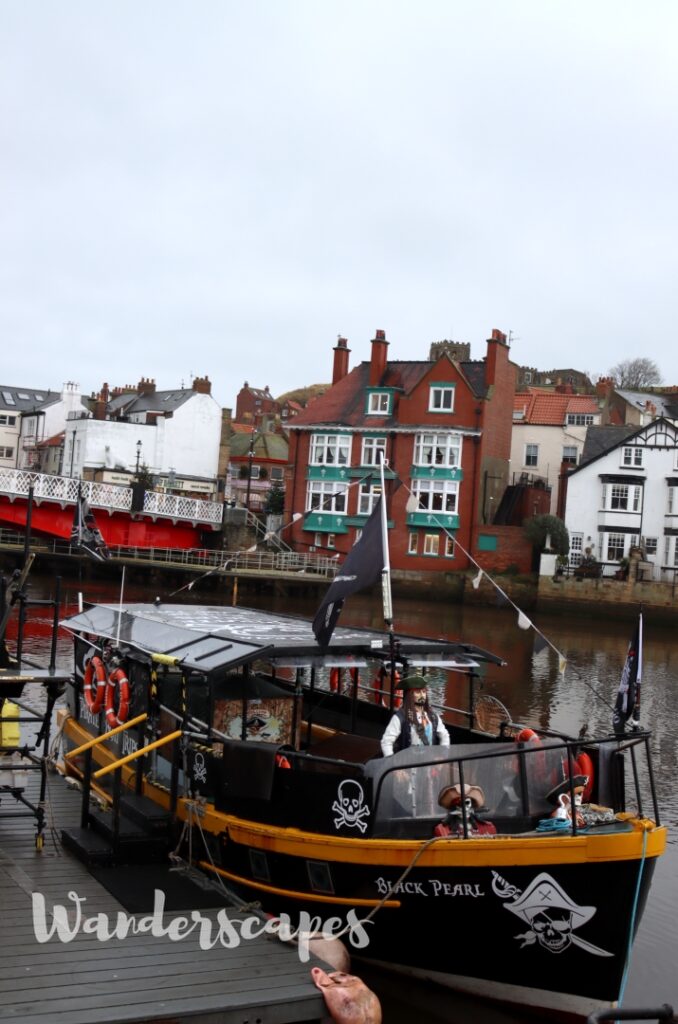
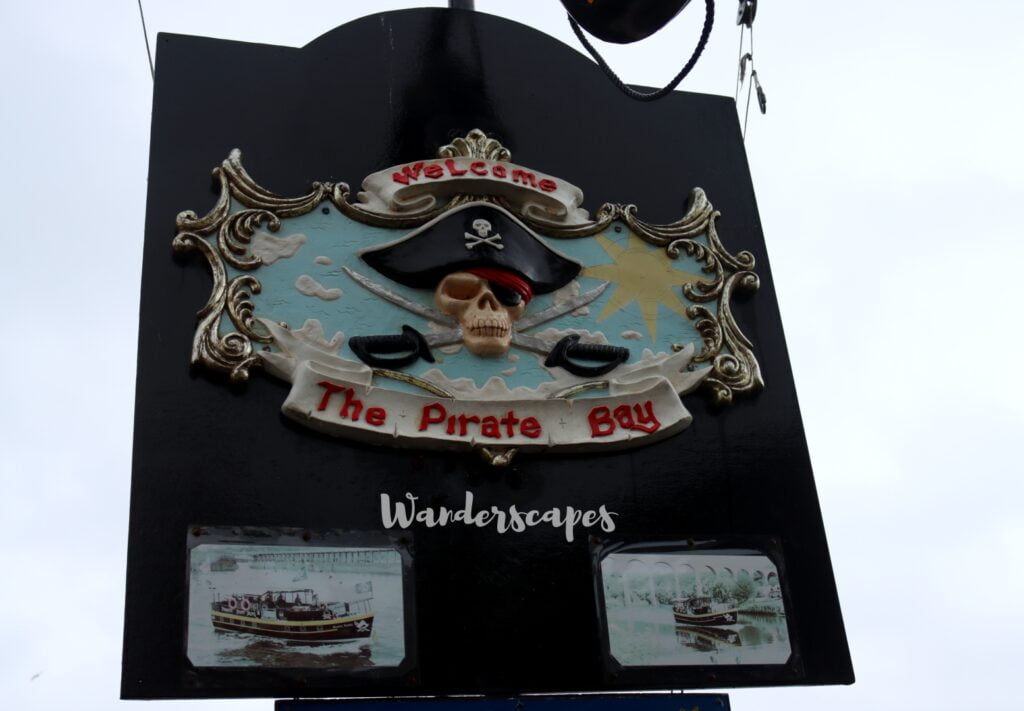
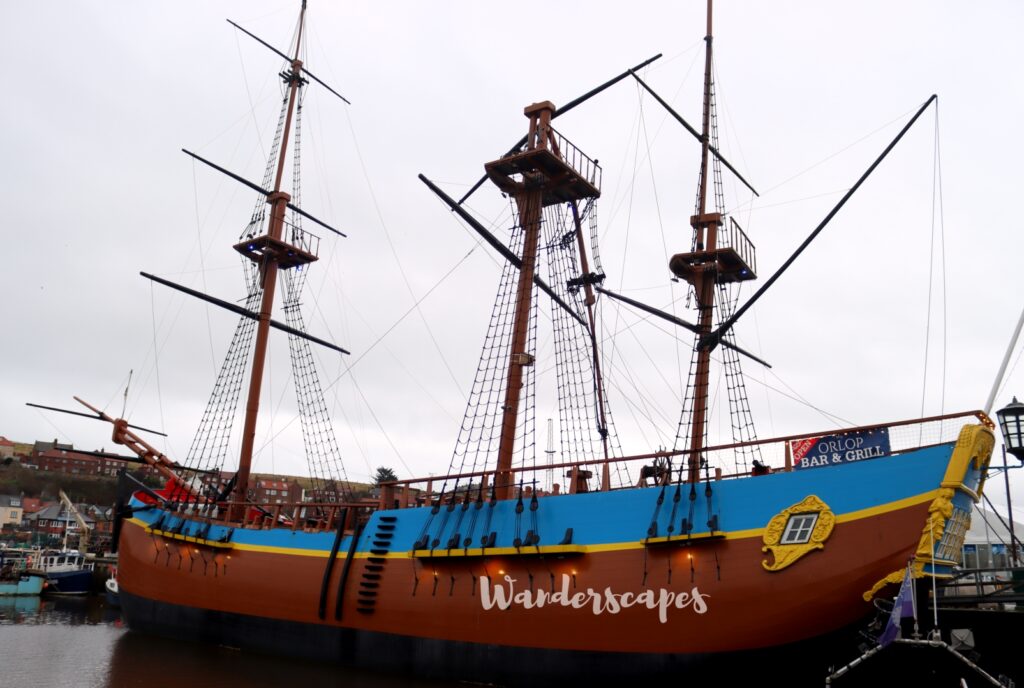
We crossed a bridge to reach the other side. The narrow street led to the famous 199 stairs to St. Mary’s church, our destination for the day.
The Old Pier and Other Seaside Sights of Whitby
Before heading to the church, we strolled down the lane to the old pier. It was a windy day with full of seaside vibes. A few gulls were flying about, often disturbing other birds in the process. We saw a few turnstones too. They were quite close and we had a good look at them before they flew off to the far end.
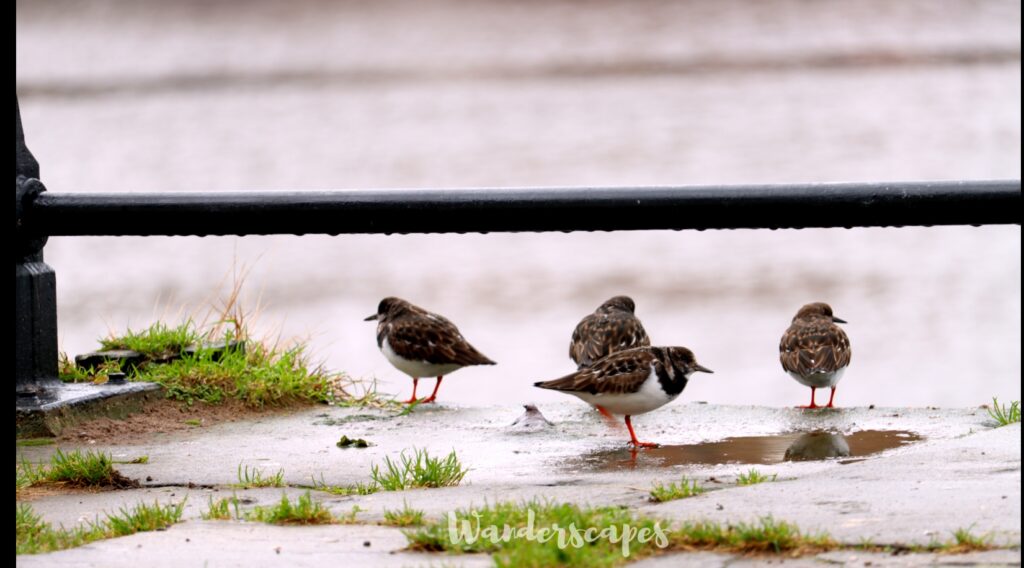
On one side stood the west cliff and on the other east cliff. River Esk drained into the sea between the two. Two new piers (west and east) almost met each other at the middle of the sea (or it seemed so). The east cliff is one of the most important sites connected with Dracula.
Dracula Lands in Whitby
Those who’ve read the novel would remember that Dracula travels from Romania to England on ship. By the time the ship wrecks at a cliffside in Whitby everyone in the ship is killed. Dracula, the lone survivor, comes ashore from the ship wreck in the form of a huge dog, climbs the stairs to up the hill to the church.
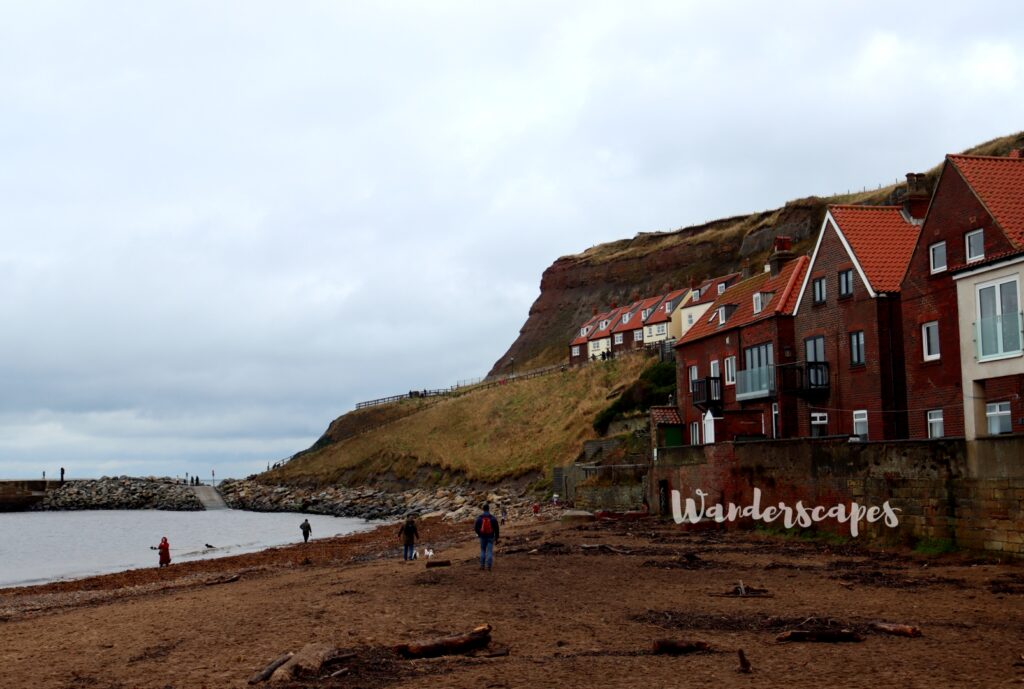
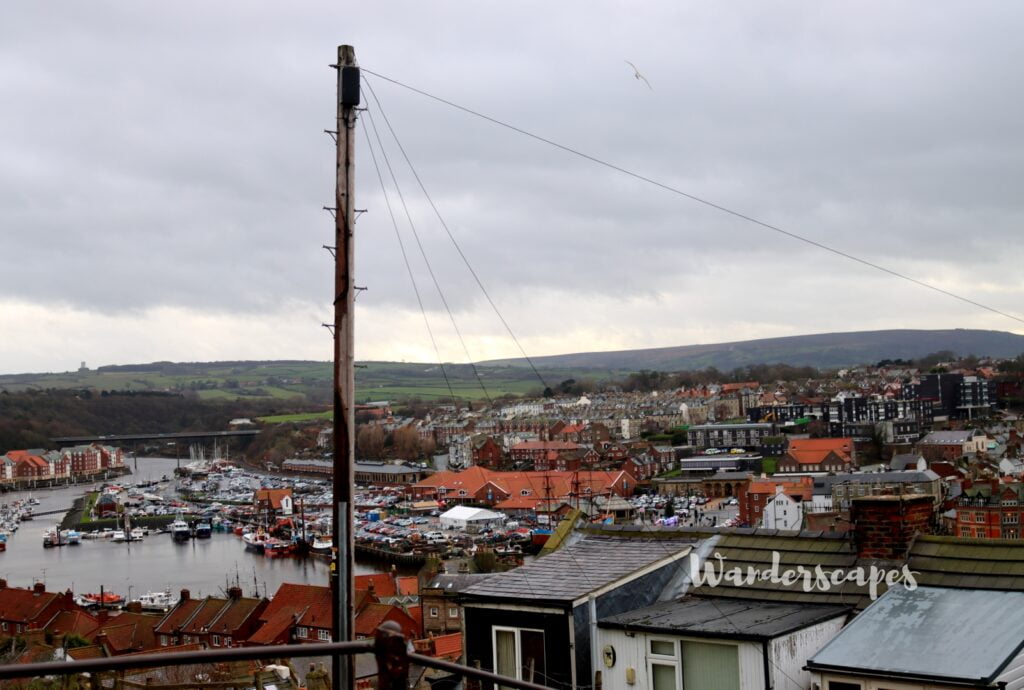
Bram Stoker got inspiration from the story of an actual ship wreck that he used it in his novel with some modifications. Standing at the pier, we felt it was no wonder that he found inspiration to use the settings in his novel. It was such a dramatic landscape!
St. Mary’s Church and Graveyard, Whitby
Soon we climbed the 199 stairs to reach the top of east cliff. The view from the top is breathtaking. We get a panoramic view of Whitby town, the port, west cliff, piers and more. It was a scene like no other!
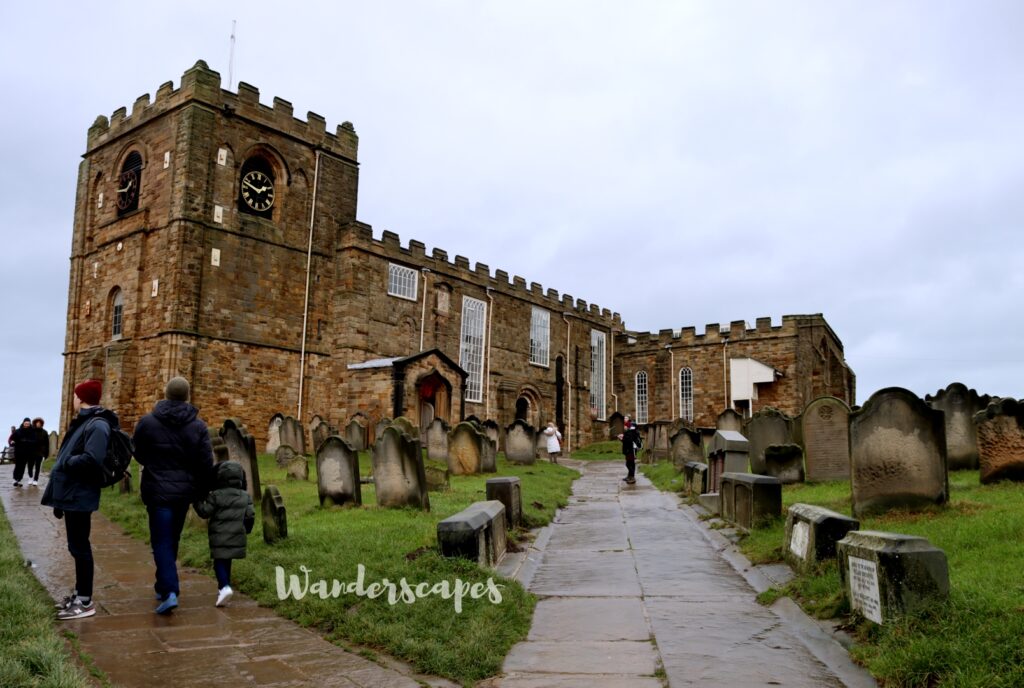
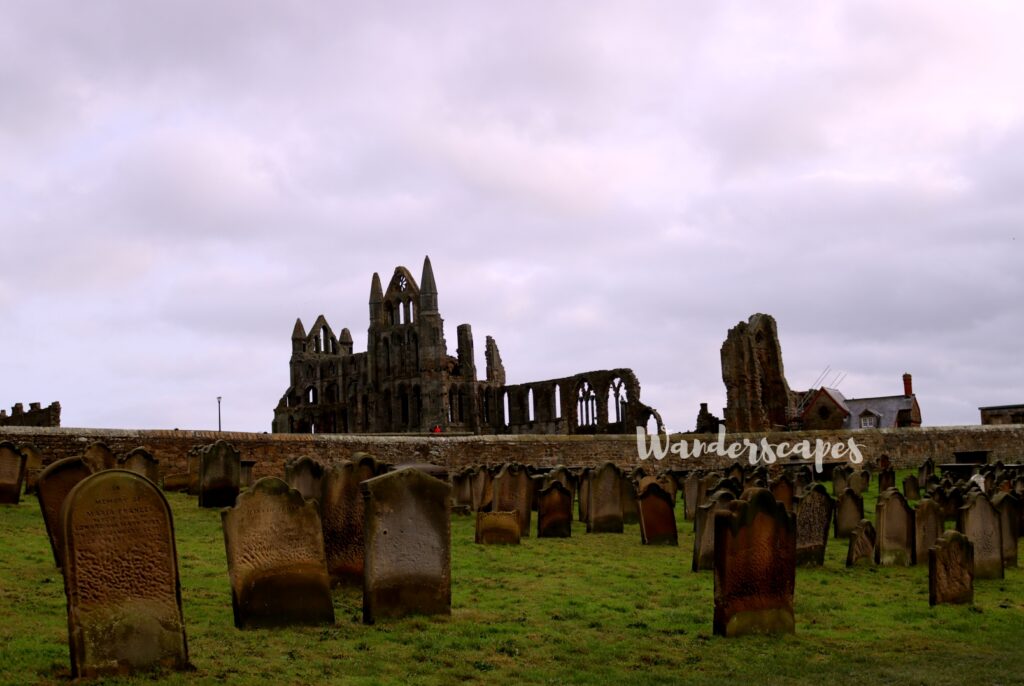
After enjoying the scenery for sometime, we visited the church. This is an old church dating back to 1110 AD. However, most of its interiors are from the 18th century. During our visit we were surprised to see boxed pews – presumably for members of same family. It was the first time we saw something like that. We also saw numerous Christmas trees placed all over the church. There were some nativity scenes too – all from the Christmas celebrations few days earlier.
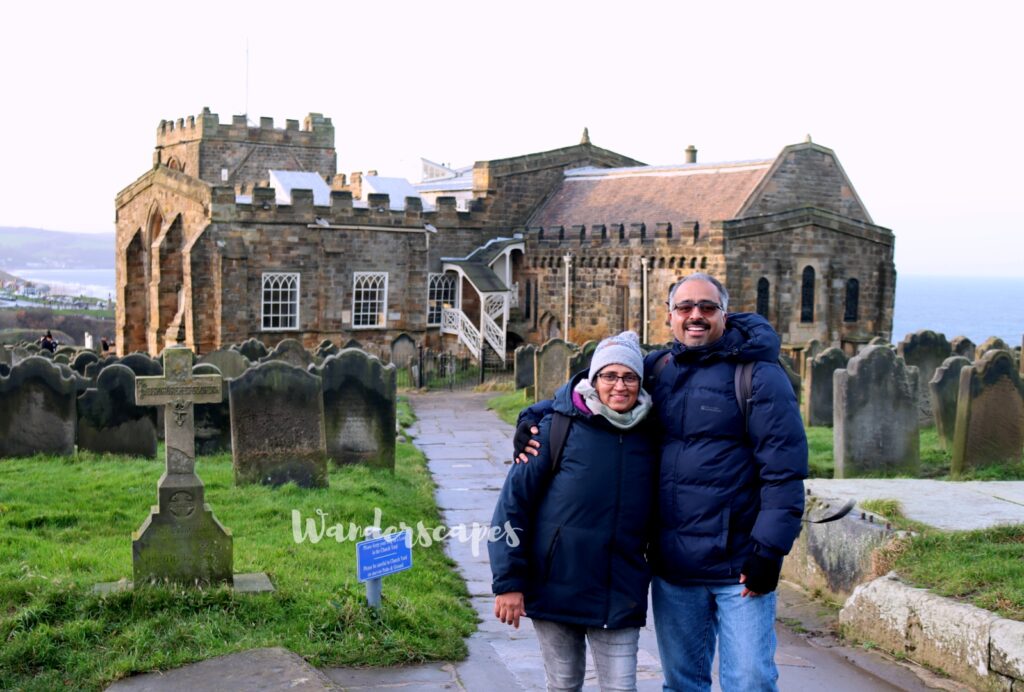
Another amusing sight was a notice pasted on the church door urging visitors visitors not to ask staff members for Dracula’s grave. It goes on to explain you’ll not find Dracula’s grave here because Dracula is a fictional character.
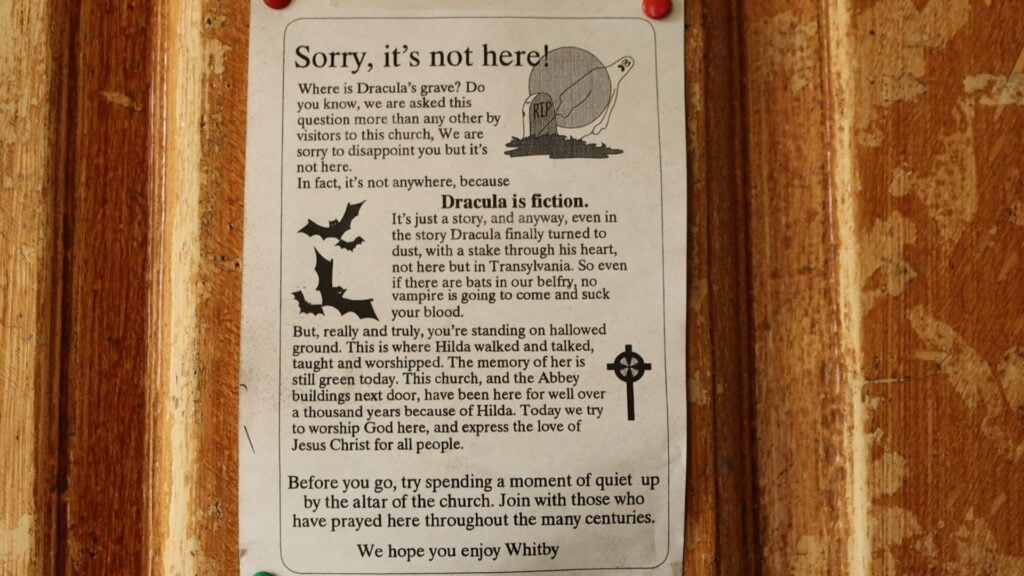
The Graveyard
The church graveyard gained popularity in connection with Dracula because it Bram Stoker mentions it in the novel.
For a moment or two I could see nothing, as the shadow of a cloud obscured St. Mary’s Church. Then as the cloud passed I could see the ruins of the Abbey coming into view; and as the edge of a narrow band of light as sharp as a sword-cut moved along, the church and churchyard became gradually visible… It seemed to me as though something dark stood behind the seat where the white figure shone, and bent over it. What it was, whether man or beast, I could not tell.
Passage from Bram Stoker’s Dracula
We saw several huge tombstones there. Some of the engravings had withered away. Bram Stoker visited the graveyard and used the names he found in these tombstones to name his characters in the novel. So, the names of the people Dracula kills in the novel are actual people who lived in Whitby (or at least interred there).
We tried to search for some names mentioned in the novel, but couldn’t find any.
Whitby Abbey
Looming at the background of the graveyard is the Whitby Abbey ruins. Originally built in the seventh century, it underwent several modifications over the centuries. The structure we see now is the remains of a 11th century abbey. When Henry VIII established the church of England, he ordered destruction of all catholic churches and abbeys, including the Whitby abbey.
Unsurprisingly, the abbey features in Dracula novel too.
Right over the town is the ruin of Whitby Abbey, which was sacked by the Danes … It is a most noble ruin, of immense size, and full of beautiful and romantic bits; there is a legend that a white lady is seen in one of the windows.
Excerpt From Mina Murray’s diary in Count Dracula
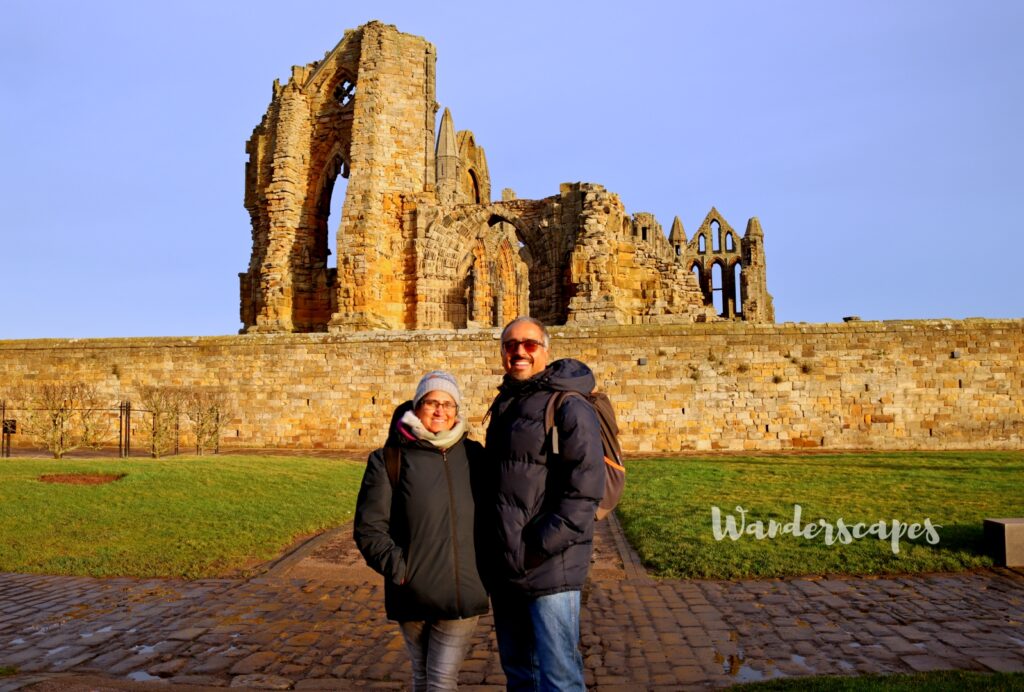
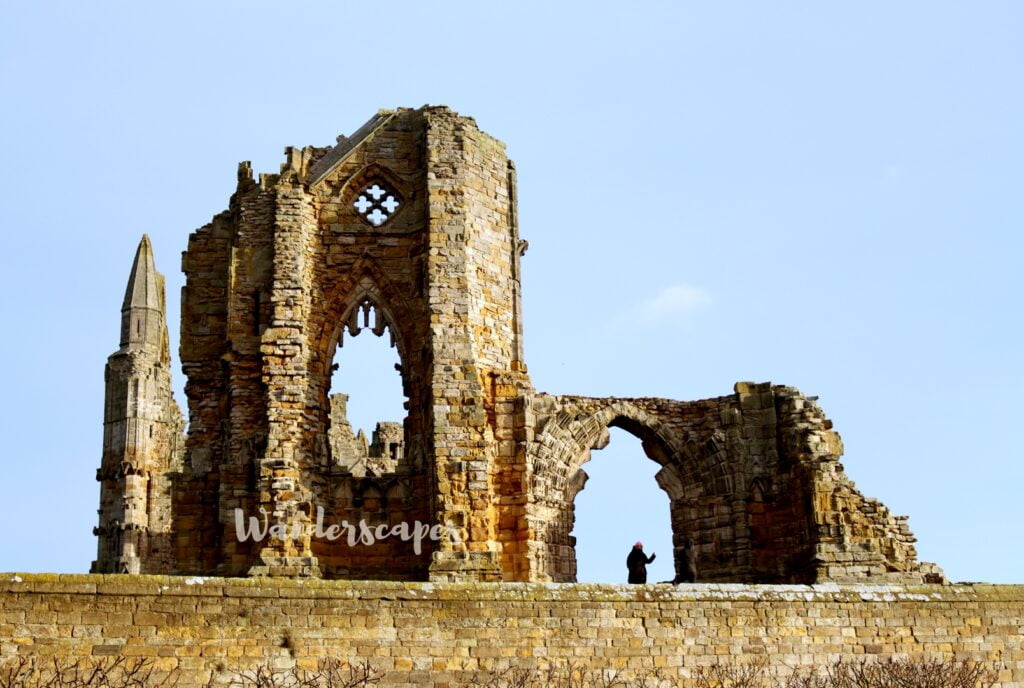
The site is now managed by English Heritage and you’ll need a ticket for access to the abbey site. Although you don’t have to book in advance, if you pre-book you might get some discounts. You can find the booking details here.
An Impressive Gothic Structure
Even though it is in ruins, the Whitby Abbey is still an impressive gothic structure. Whether you see it up close or from afar, it has an eerie feel to it, which makes it a perfect setting for a gothic novel like Dracula. One can imagine how scary it looks when viewed in the dark – the skeletal structure is the ideal backdrop for a scary story such as Dracula.
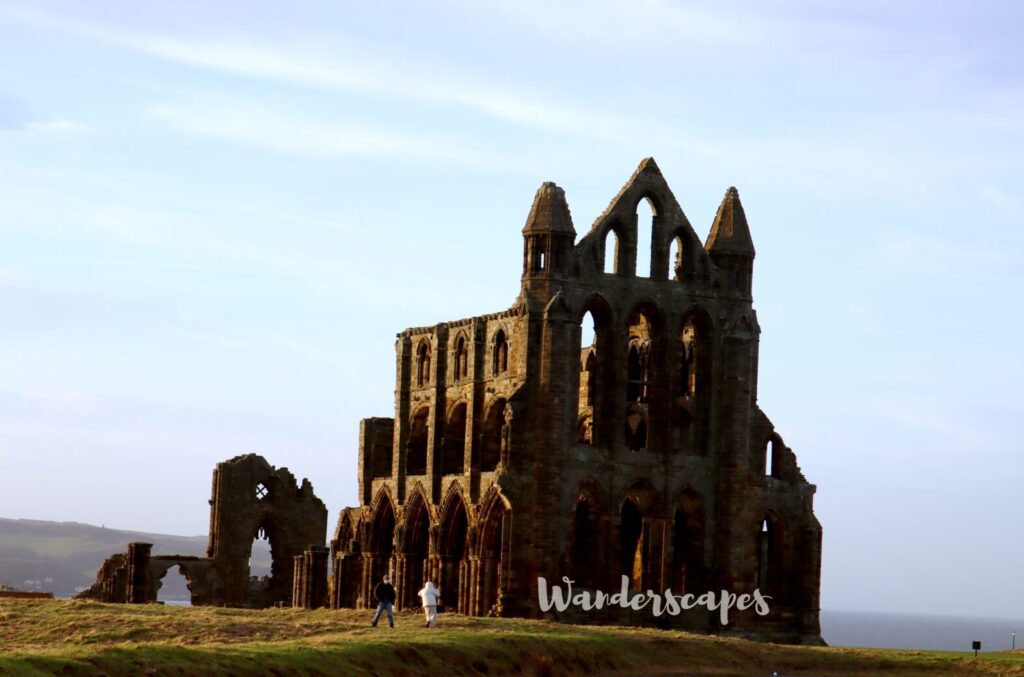
Whitby is also where you’ll find fossils – ammonites – among the cliffs. So, if you are into fossil hunting, Whitby is a great place to look for some.
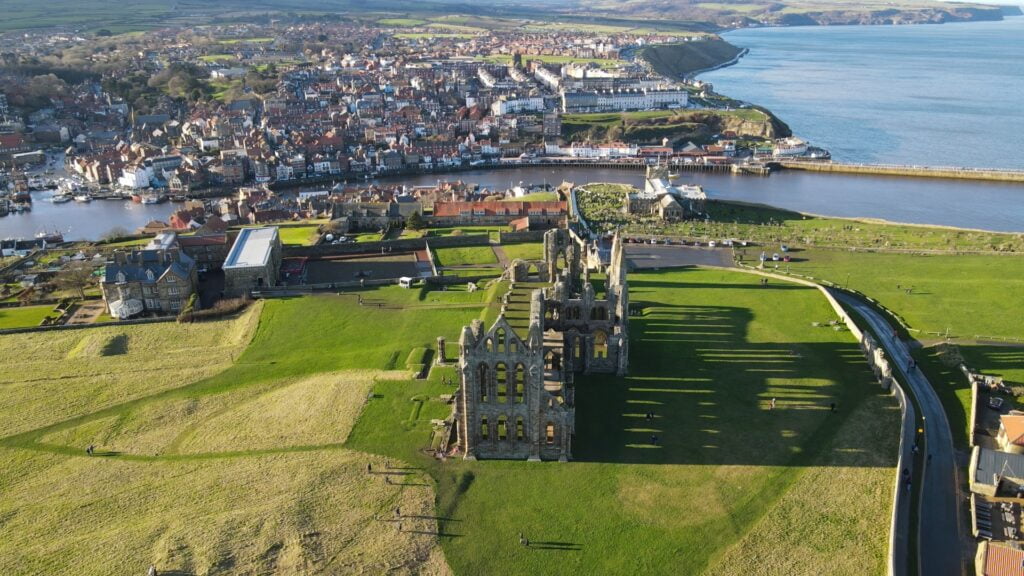
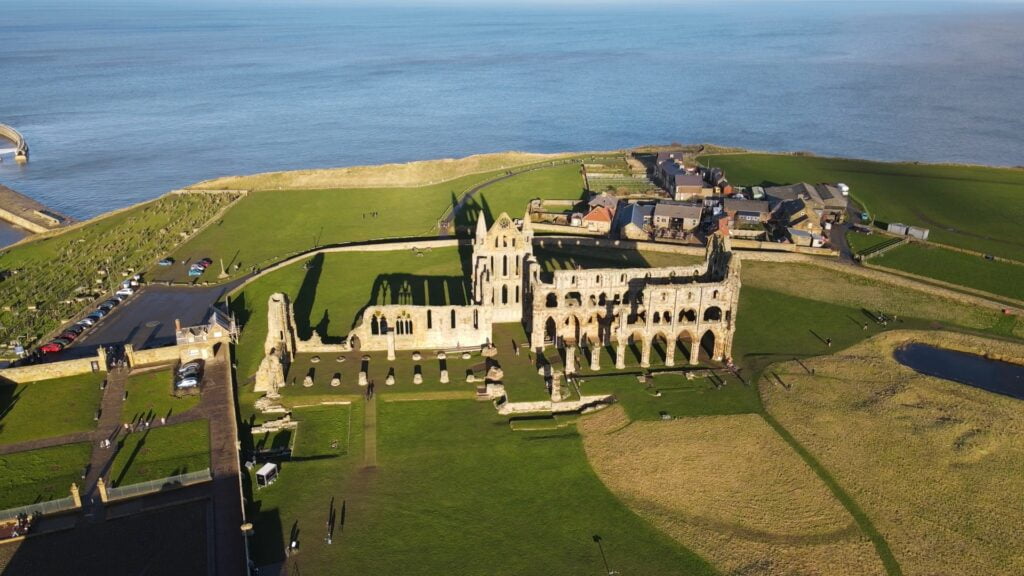
Back in Whitby Town
We spent some time near the Abbey appreciating the massive structure and its archeology, among other things. The sun was about to set and so we bid bye to the abbey and church. We climbed down the 199 stairs and walked along the cobbled streets for some time.
It was busier than before. We passed numerous shops selling ornaments adorned with jet – a gem. Jet is a hard, semi-precious stone formed by the fossilisation of wood. Whitby has several shops selling them.
We also walked past the Captain Cook memorial museum, which was closed for winter. Captain Cook, the great explorer had close connections with Whitby as he spent nine years here as an apprentice.
As the day turned into night, we decided to go back to our guest house. We had another whole day in Whitby to see other top sights of the town.
Watch our vlog on our trip to Whitby
While you are here, why not check out our previous blogs too?
